Last week, RES Hub hosted a knit-in at which UTS researchers shared their knowledge about the gut microbiome and its importance to our physical and mental wellbeing. At the same time, artists Pat Pillai and Mary Hayman showed us how to create textile microbes, gut cells and intestinal villi from yarn and other fabrics. Their Gut Feelings Community Art Project promotes gut health and the wonders of the gut microbiome.
Exploring the fascinating gut microbiome
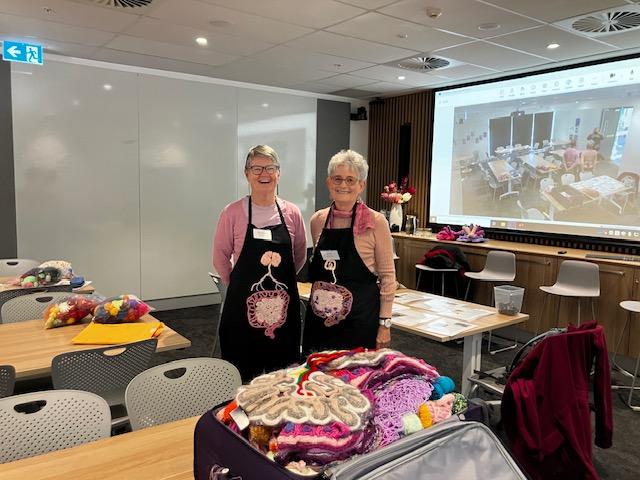
Caption
Pat Pillai and Mary Hayman at the Gut Feelings Community Art Project event
After an introduction from Pat and Mary to the project’s aims to raise awareness of gut health, we started crafting as we heard from four UTS researchers. Following knitting, crotchet and no-knit patterns, our creations will be part of a giant gut artwork that will be on display at Hazelhurst Arts Centre in National Science Week this August.
How Australian honey promotes gut health
Our first speaker was Dr Nural Cokcetin, the Faculty Research Engagement Manager for the UTS Faculty of Science, who discussed how she has studied the microbiome through medicinal honey and bee research.
“We look at a variety of different Australian honeys using an artificial gut system to examine whether eating honey is working as a prebiotic food- food sources like complex sugars and fibres that we don't digest ourselves but they reach our gut and feed the microbes living in our gut," Nural explained.
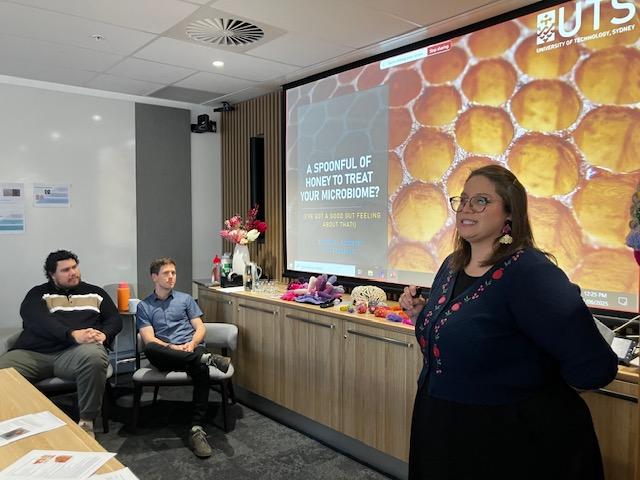
In one small study, people were asked to eat a tablespoon of honey each day so the team could examined changes in their microbiome.
“We found that when we introduce honey into the system, the numbers of beneficial bacteria really increased, and they started producing compounds that helped to stop the growth of the potentially harmful ones,” Nural said.
Some of those compounds, like short chain fatty acids, also have other health benefits.
“They help to prevent the progression and development of many diseases that start in the gut, including things like colon cancer, which is a leading cancer killer around the world.”
We found that when we introduce honey into the system, the numbers of beneficial bacteria really increased, and they started producing compounds that helped to stop the growth of the potentially harmful ones.
Nural said a healthy gut has huge health benefits throughout the body because our microbiome is involved in a number of bowel diseases.
“It can also influence things like whether we get fat, develop cancer, are prone to heart disease or even mental health issues. So if your microbiome is healthy, chances are you are too, and if honey can help just a little bit then I guess that's a pretty sweet solution,” she said.
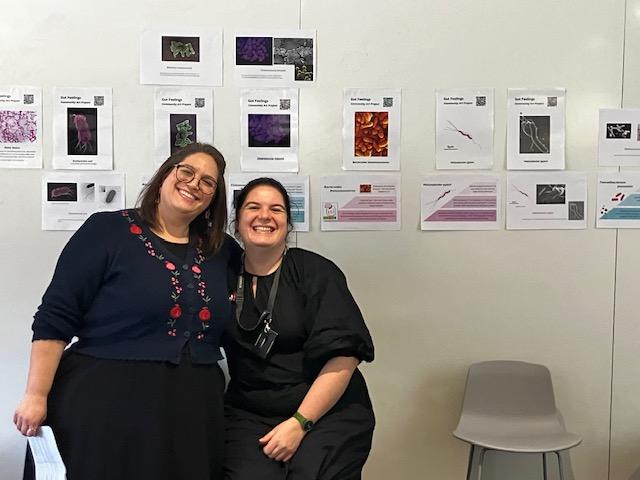
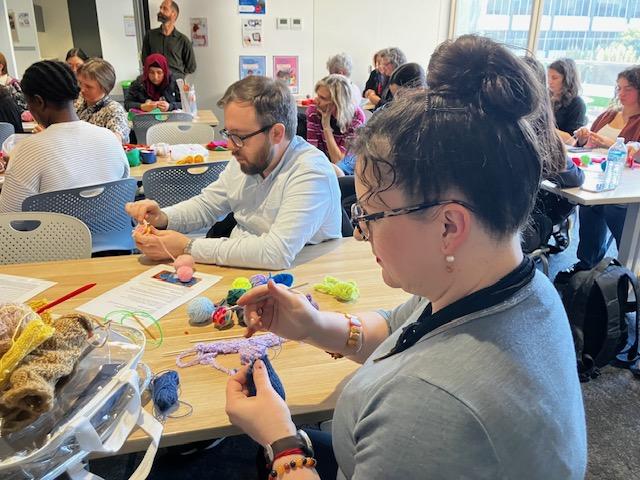
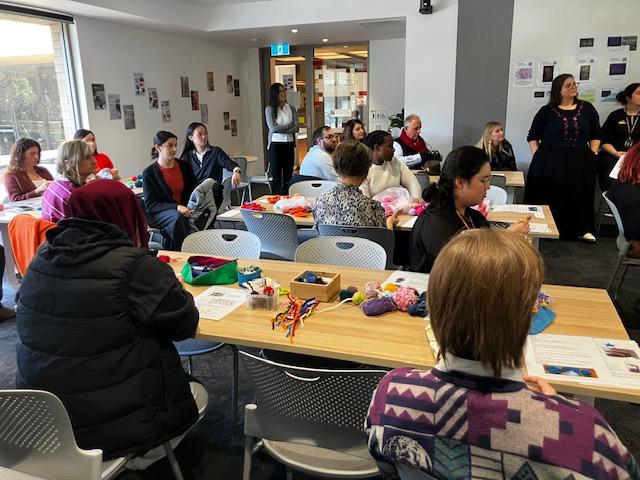
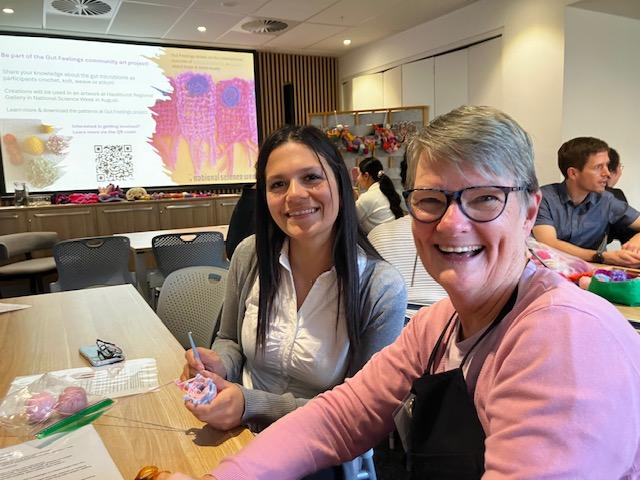
Exploring the gut-brain axis
Next up, we heard from Dr Mike Kendig, an ARC DECRA Fellow and Senior Lecturer at UTS Faculty of Science. They discussed research into the interaction between the gut microbiome, nutrition and dietary habits and the brain.
Mike said that we tend to share a microbiome with people that we live with, but that the composition of the microbiome is changing all the time.
“The microbiome can change very quickly if we change our diet,” he said.
“But the effects of the foods you eat don't just change which bugs are in your gut. This is because the gut also talks to the brain. That communication network is called the gut-brain axis, the topic our group and many other researchers are looking at.”
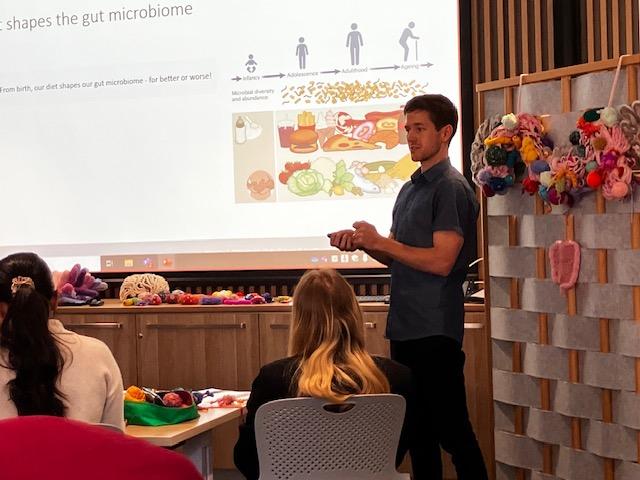
While a healthy diet allows for good integrity of the gut barrier which is key to maintaining good health, foods high in salt, sugar and saturated fat, by contrast, promote a more inflammatory microbiome.
“This weakens the gut barrier integrity, potentially allowing noxious agents to escape into circulation,” Mike explained.
With recent clinical trials suggesting that targeting the microbiome may aid in managing mental health and wellbeing, Mike added that the microbiome is a fascinating, complex system containing not only bacteria, but other microorganisms as well.
But the effects of the foods you eat don't just change which bugs are in your gut. This is because the gut also talks to the brain. That communication network is called the gut-brain axis, the topic our group and many other researchers are looking at.
“Recent advances in technology and sequencing mean that new research in this space is looking at how things like viruses, protozoa and fungi interact with the bacteria in our gut to determine microbiome health. This may ultimately lead to a new avenue of treatments for physical and mental health conditions,” he said.
Examining the microbiome under the microscope
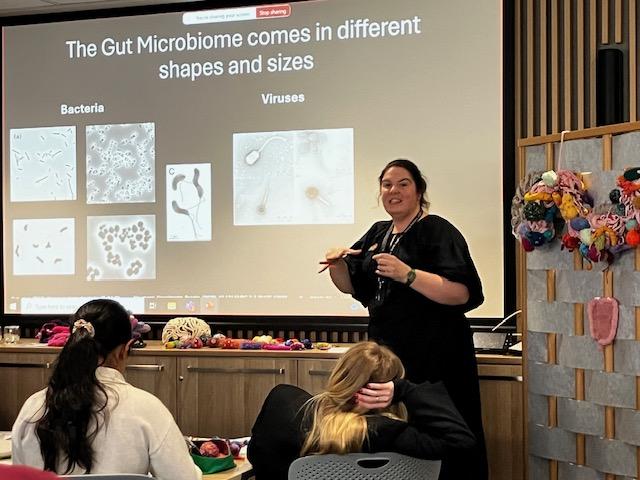
After that, Dr Amy Bottomley, a Senior Research Fellow at Australian Institute for Microbiology and Infection, took us through a series of microscopic images to show how the gut microbiome is diverse and comes in lots of different shapes and sizes.
“Often when you're thinking of bacteria, you're thinking of little cylinders or little rods, which we can see here, but they can come in lots of different shapes. We also see how they can come in these bent or club shapes and can form spheres. And these can be single, or they can form in clusters. And the bacteria can also change shape when they're in their gut in response to their environment,” Amy explained.
“When we think of bacteria, we think of them quite a static shape, but actually, microbes are amazing because they can change their shape to adapt to their environment.”
Amy then demonstrated how fluorescent probes are used to look at different compartments within a cell to try and understand the processes of a sample. For example, green fluorescent protein, originally found in jellyfish, is now used commonly in the lab.
When we think of bacteria, we think of them quite a static shape, but actually, microbes are amazing because they can change their shape to adapt to their environment.
“We can fuse our proteins together and then look to see where our protein goes within the cell and understand the function of that protein,” Amy said.
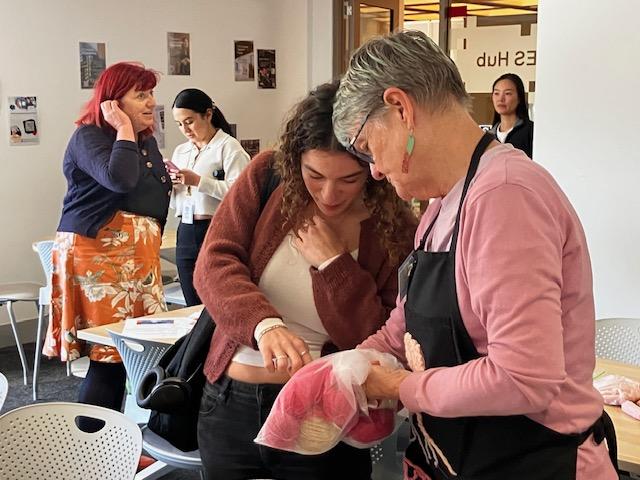
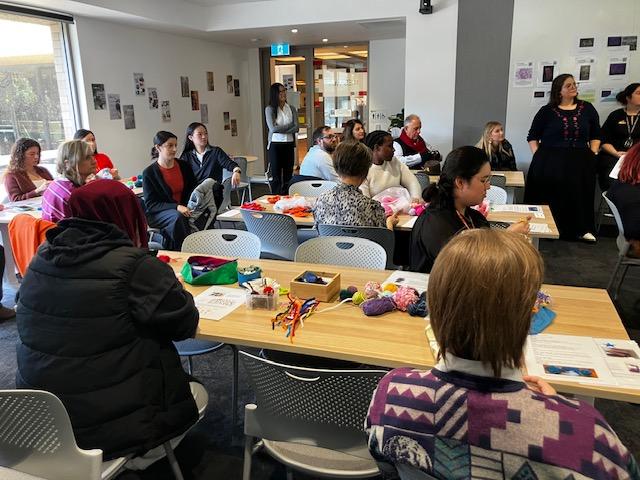
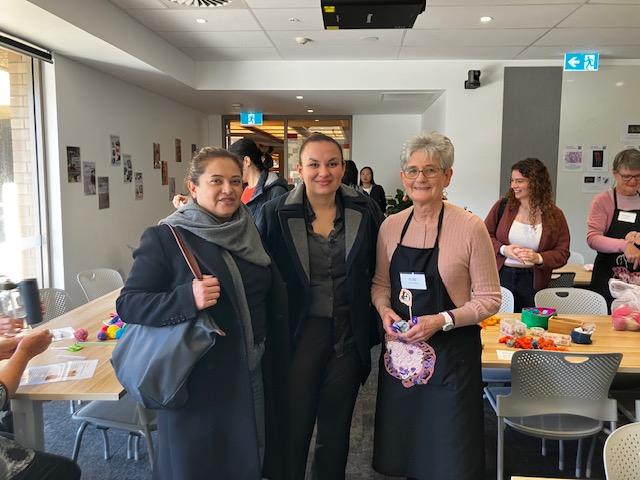
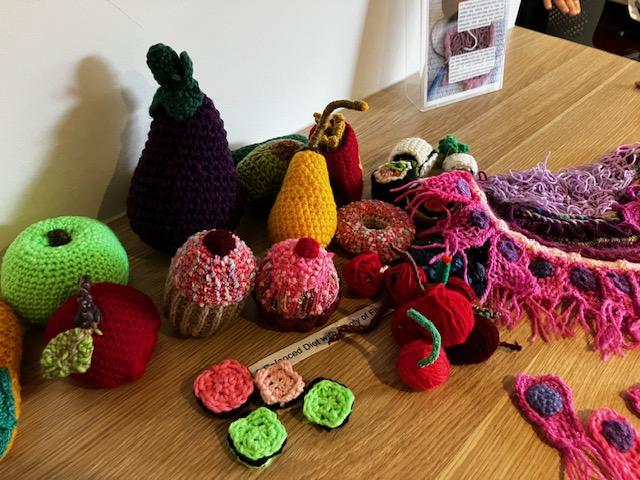
Combatting gut pathogens
Concluding the scientific presentations was UTS Chancellor’s Research Fellow and Lecturer in the School of Life Sciences, Dr Dan Enosi Tuipulotu, a microbiologist who has been working with gut microbes for more than ten years.
What my work has been trying to understand is how bugs actually cause death, and whether there is a way that we can actually treat Clostridium infections. For this, I use imaging technology to try and understand how toxins actually enter into cells.
“I work on gut pathogens and explore the dark side of what happens when you get imbalances of microbes in the intestine. They generally tend to form clusters and never really attack in isolation. They like to form a solid army of bacteria before they start causing disease,” Dan explained.
“What my work has been trying to understand is how bugs actually cause death, and whether there is a way that we can actually treat Clostridium infections. For this, I use imaging technology to try and understand how toxins actually enter into cells.”
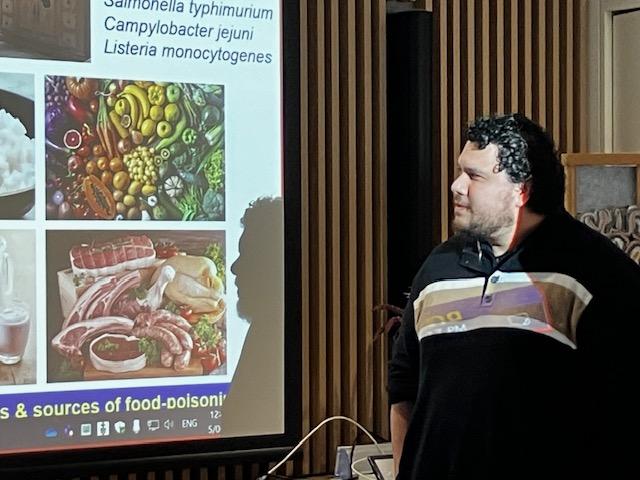
Be part of the Gut Feelings project
Gut Feelings is a fantastic community art project that promotes connections between science and the everyday. No matter what your skill level, you can try your hand at crocheting, knitting, weaving or stitching as you discover fascinating facts about the gut microbiome from Australia’s brilliant research scientists.
With the aim of promoting gut health and exploring the gut-brain connection, this national community art project is a great opportunity for gut health researchers to showcase their knowledge.
New research about the complexity and wonders of the gut microbiome has captured the popular imagination. Artists Pat Pillai, Rita Pearce and Mary Hayman share a history of creating community artworks that promote connections between science and the everyday.
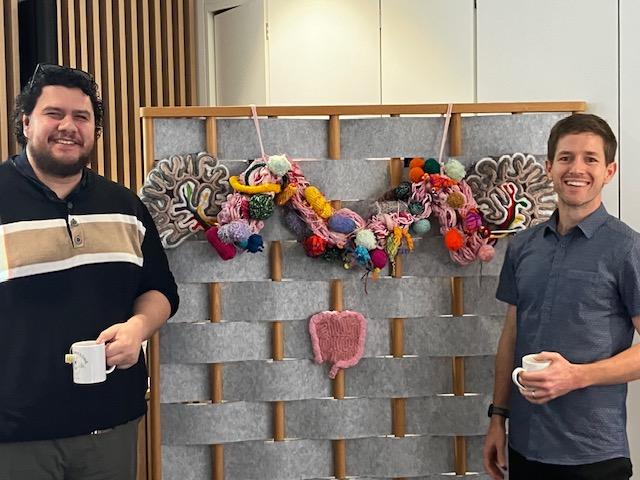
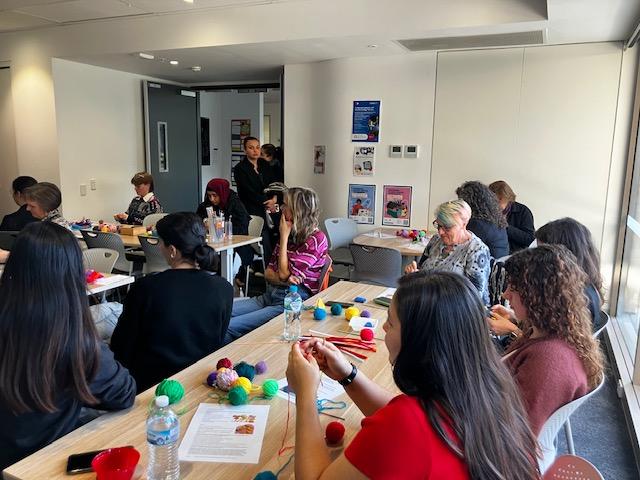
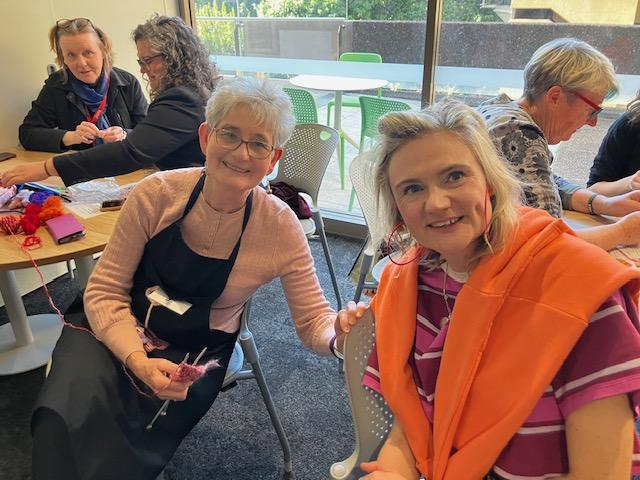
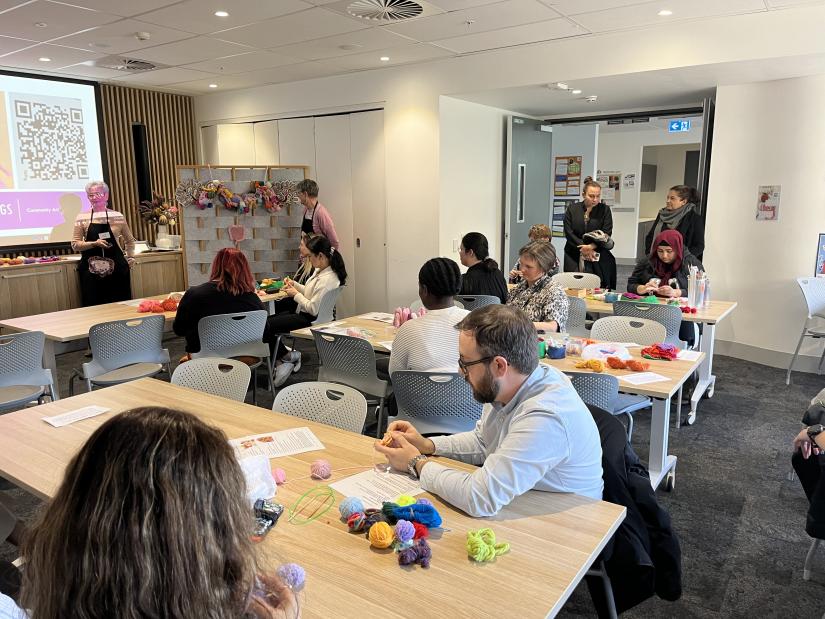
They aim to collect as many textile artefacts as possible for their giant gut microbiome art work that will be unveiled in National Science Week!
Give them a hand by downloading the scientifically informed patterns and making some textile microbes, gut cells and intestinal villi. It’s easy and fun and you will be helping to raise awareness about the importance of gut health to our physical and mental wellbeing.
Download the patterns and learn more about the Gut Feelings Community Art Project